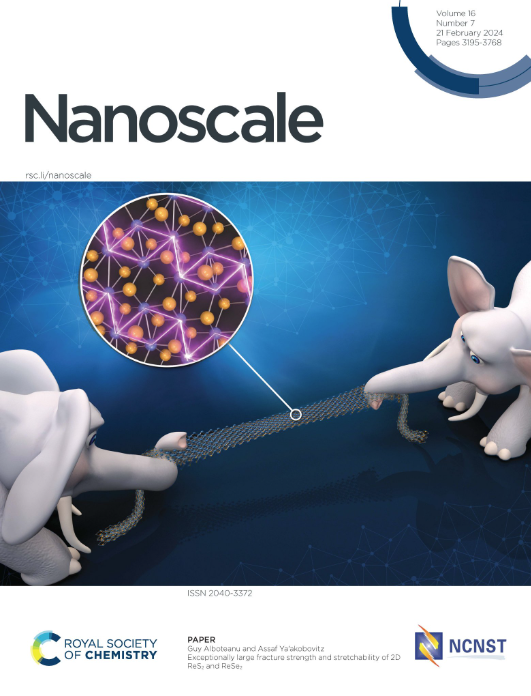纳米尺度石墨烯- sio2 -石墨烯记忆电阻器中温度相关的电阻开关统计和机制
IF 5.8
3区 材料科学
Q1 CHEMISTRY, MULTIDISCIPLINARY
引用次数: 0
摘要
忆阻器的发展提供了一个变革性的机会,通过实现非易失性存储器和神经形态计算来彻底改变电子设备和计算系统。氧化硅忆阻器由于其低成本、高集成度和与现有制造工艺兼容的潜力而特别有前景。在本研究中,我们统计研究了纳米级(亚2nm)氧化硅忆阻器在不同温度下的开关机制。作为单极忆阻器,平均定值电压(从高阻状态切换到低阻状态)随温度下降而上升,平均复位电压(从低阻状态切换到高阻状态)随温度下降而略有下降。这些值的标准差随温度下降而增大。基于威布尔分布对这些行为进行了分析。统计结果表明,凝固过程是由氧离子从氧空位扩散促进硅导电丝的形成,而复位过程是由焦耳热驱动导电丝断裂和硅氧复合,需要在更高的环境温度下强化加热以抵消氧离子的扩展迁移。除了一般的电阻开关机制只涉及硅导电丝的形成和破裂之外,我们的见解为原子水平上开关过程的随机性质机制提供了新的理解,对未来神经形态计算应用具有重要意义。本文章由计算机程序翻译,如有差异,请以英文原文为准。
Temperature-dependent Resistive Switching Statistics and Mechanisms in Nanoscale Graphene-SiO2-Graphene Memristors
The development of memristors presents a transformative opportunity to revolutionize electronic devices and computing systems by enabling non-volatile memory and neuromorphic computing. Silicon oxide memristors are particularly promising due to their potential for low-cost, high-integration and compatible with existing manufacturing process. In this study, we statistically investigate the switching mechanisms of a nanoscale (sub-2nm) silicon oxide memristor at different temperature. As a unipolar memristor, average set voltage (switching from high resistive state to low resistive state) rises with temperature drop while average reset voltage (switching from low restive state to high state) drops slightly with temperature drop. Standard deviation of those values increase with temperature drops. These behaviors are analyzed based on Weibull distribution. Statistical results suggest that the set process involves the formation of Si conducting filament promoted by the diffusion of oxygen ions from oxygen vacancies, while reset process involves Joule heat driven conductive filament rupture and silicon-oxygen recombination, requiring intensified heating at higher environmental temperatures to counteract extended oxygen ion migration. Beyond general resistive switching mechanisms only involved with the formation and rupture of Si conductive filament, our insights provide a novel understanding to the stochastic nature mechanisms of the switching process at atomic level, with significant implications for future neuromorphic computing applications.
求助全文
通过发布文献求助,成功后即可免费获取论文全文。
去求助
来源期刊

Nanoscale
CHEMISTRY, MULTIDISCIPLINARY-NANOSCIENCE & NANOTECHNOLOGY
CiteScore
12.10
自引率
3.00%
发文量
1628
审稿时长
1.6 months
期刊介绍:
Nanoscale is a high-impact international journal, publishing high-quality research across nanoscience and nanotechnology. Nanoscale publishes a full mix of research articles on experimental and theoretical work, including reviews, communications, and full papers.Highly interdisciplinary, this journal appeals to scientists, researchers and professionals interested in nanoscience and nanotechnology, quantum materials and quantum technology, including the areas of physics, chemistry, biology, medicine, materials, energy/environment, information technology, detection science, healthcare and drug discovery, and electronics.
 求助内容:
求助内容: 应助结果提醒方式:
应助结果提醒方式:


